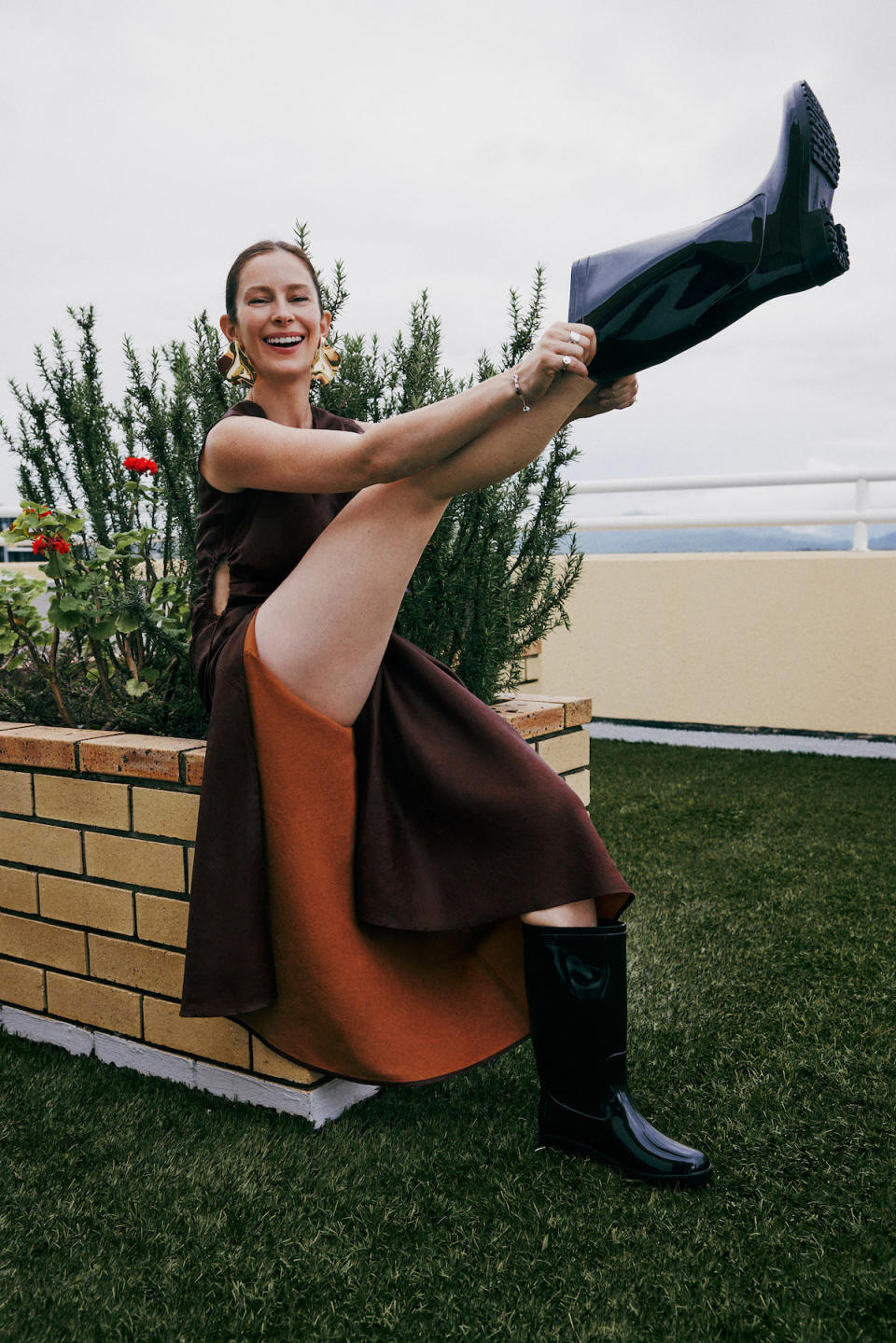Silk Laundry Merges Conservation With Material Innovation

Over the past century, traditional farming and logging destroyed more than1,200 acres of farmland in rural Queensland. About 60 percent of the land was cleared entirely, with the remaining 40 percent exhibiting substantial thinning.
Australia-based fashion brand Silk Laundry bought those acres in 2020 from a family—who owned it for a century— for 400,000 Australian dollars (roughly $265,000) and planted more than10,000 trees through the brand’s carbon sequestration initiative, Project 166.
More from Sourcing Journal
ESG Outlook: Green Story's Akhil Sivanandan on Helping Brands Unlock Sustainability Data Potential
Levi's Scales Use of Transitional Cotton, Plant-Based Indigo
“Project 166 is intertwined with everything we do; I believe in giving back when you can and trying to leave a space or a place a little better than when you found it,” Katie Kolodinski, Silk Laundry’s founder and creative director, said. “I always want to be right in it, getting dirty and being on the ground making a difference. Change can happen, but I believe you need the actions, hearts and minds of many to make a real difference.”
As such, the socially conscious brand making silk pieces for women of all ages believes fashion can play a “pivotal role” in educating the public about environmentalism. The Australian label’s upcoming collection, “A View,” merges conservation with fashion.
“In my case, design has always been deeply intertwined with nature,” the Canadian-Australian designer said. “It is my inspiration and my motivation; I could not have one without the other.”
However, the CAFA Womenswear Designer of the Year nominee said her work through Silk Laundry has created the space and ability to support her conservation projects—including Project 166.
“Silk Laundry has given me a voice and a platform I wouldn’t have had before,” Kolodinski continued. “It has allowed me to begin conversations and spark ideas and a different mindset amongst the people who wear our garments and follow our stories.”
The label’s latest collection “seems to have been years in the making,” Kolodinski said, with the catalyst being the aerial photography of J. Henry Fair, “an influential nature and conservation photographer whom I began following closely in 2020.”
“His work allows you to confront a reality usually hidden from public view,” she continued. “J. Henry Fair possesses extreme sensitivity to our natural world, and I see parts of myself in him.”
With Fair’s permission, Silk Laundry “transformed” some of the imagery from his book, “Industrial Scars: The Hidden Cost of Consumption,” into exclusive prints for “A View.”
“Fashion can be a means of communication; Silk Laundry’s garments and prints have become wearable and meaningful conversation starters,” Kolodinski said. “Through our collections, we can spark curiosity in the world. Our collections often celebrate the beauty of nature as well as what has been lost or is at risk if we don’t pay attention and make adjustments to our way of living.”
The collection introduces two new-to-Silk-Laundry materials: 100 percent organic cotton and pure mud silk.

The recycled and organically dyed cotton tees come from a regenerative cotton farm in India that supports sustainable agricultural practices and fair labor standards. Mud silk—a process that fortifies the fabric with iron-rich mud, yielding a “distinct,” leather-like finish—pays homage to a UNESCO-recognized technique from the Hakka people of Southeast China. The traditional fabric uses an all-natural process that dates to the Ming Dynasty in the fifth century. The result is a “completely unique fabric” that is more durable than traditional silk and “imbues” the fabric with antioxidant, antibacterial and anti-wrinkle properties. Silk Laundry’s mud silk resulted from a collaboration with trusted producers in China, who hand-dyed the fabric in the river delta using all-natural materials.
“For this collection, I wanted to explore slower and more traditional methods of production, which work with the natural environment rather than against it,” Kolodinski said. “Its production requires no harsh chemicals or pollutants that harm our environment and waterways, yet it necessitates cooperation with nature as when the mud is harvested it must be dried in sunlight, meaning that producers must wait until the weather conditions are just right. Contrary to typical fashion production which emphasizes volume, uniformity, and rapid distribution, mud silk is slow and deliberate, producing small batches of unique pieces.”
The 88-piece collection starts at $150 for a 100-percent silk camisole and jumps to $650 for the mud silk pieces. The first release will hit retail this month.
“The worlds of fashion and conservation are merging for me,” Kolodinski said. “I feel as if I’m just starting to realize some of my lifelong dreams of working with wildlife, conservation and philanthropy in a way I never imagined possible.”

